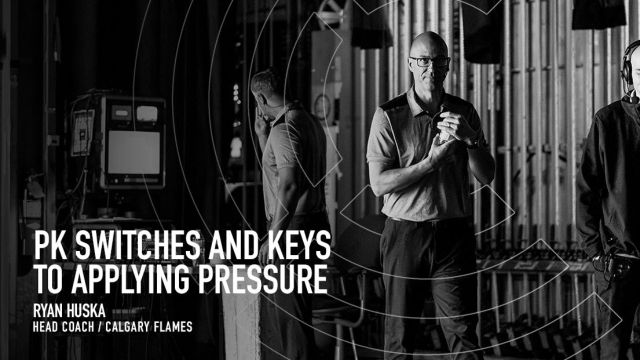
Recently I wrote about creating more scoring chances and shots by practicing everything except for shooting. Ryan Reaves can probably shoot as hard as Morgan Reilly, so why doesn't he have as many goals as the defenceman?
If you've spent time watching the Maple Leafs in the last few years the answer is pretty obvious. Teams need to break the puck out, enter the zone, potentially forecheck, cycle the puck, move it in the offensive zone, and all of that occurs before they actually get a shot on net. A lot of skill and tactics take place before that scoring chance happens.
"We let our skill do the work. Not settling for that outside shot. Looking for that quality look."
For Tara Watchorn and the Boston University Terriers Women's hockey team, habits and reproduceable skills are the key to building offensive zone time.
Line changes are one of the biggest indicators of momentum, and when a team has momentum, offensive zone time usually follows. And we all know that when you spend a lot of time in the offensive zone, skill takes over, like Watchorn says, and scoring chances follow. A team that plays in the offensive zone more often than the opponent will win the game more often than not. There are a lot of factors like goalies, bounces, or playing against a team that's comfortable in their own end, but as long as your team has the puck and you've got the puck then it means they don't.
All of that is to say: this is why short shifts are important. I can see it in the players' eyes when we talk about shorter shifts - "I'm feeling fine, I can keep going". Sure you probably can, but if you get caught on an all-out backcheck in 15 seconds then you're in trouble, and more importantly, the team is in trouble. And it's still a team sport despite the focus of every individual to rush to the next level as soon as possible.
Momentum is all about the impact on a team. Individual momentum doesn't really apply because as soon as one player is feeling it, in inevitably rubs off on everybody else. Like passing the puck, momentum is contagious whether it's good or bad.
Teach your players the impact of momentum and ask if they'd rather play in the offensive zone or the defensive zone. And when they give you the expected answer, tell them to change when they can, and not when they have to.
Check out this snippet from Watchorn's presentation and view the full video here a membership to The Coaches Site.




